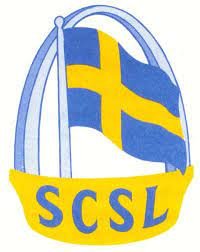
Customs & Trivia
Learn more about some of the rich customs and traditions of the Swedish people that the Swedish Council of St. Louis enjoy celebrating here in the states.
-
Feeding bread crumbs, seeds, or a sheaf of grain to the birds on is a Swedish tradition. The last sheaf of grain from the harvest, known as the Julkarve or the Christmas sheaf is hung out for the birds on Christmas Eve.
According to legend if lots of birds come, a good crop will follow the next year. The very act of giving to the birds signifies a reminder that no matter how lean the times, when people share, good fortune will follow.
-
Swedish Christmas Table Decoration
Glowing candles held in simple pine forms and often displayed with apples decorate many Swedish Christmas tables. The pine candelabras are left natural so the light wood contrasts with the brightly polished apples – one of the few fresh fruits available during Sweden’s long winters.
-
Each year the Swedish Council of St. Louis hosts a pageant celebrating the custom of Santa Lucia or Sankta Lucia. This Italian saint, St. Lucia, was adopted by the Swedes in the early 1900’s. Since then, December 13 has been her day.
On that day, the oldest daughter in a family wakes before dawn to take breakfast to her parents, who are still in bed. She wears a white gown with a red sash and a crown of candles and lingonberries, or myrten. She sings the Lucia Song – an old Italian air known as “Santa Lucia”. She then serves her family freshly baked saffron buns (lussekatter), ginger cookies (pepparkakor) and steaming hot coffee.
The main Christmas celebration is on December 24, when Santa Claus, known as “Jul Tomte” comes to visit the children. He dresses much like our American-style Santa and is accompanied by elves.
The season officially ends on January 13, the “20 of Knut,” when the tree is thrown out.
-
Each farm or homestead in Sweden had – and might still have – its “hustomte,” an elf who guarded the buildings as well as their inhabitants, whether man or beast, against evil and mishap.
To keep the little fellow happy – and one wanted him to stay, of course – one had to serve him a bowl full of rice porridge at Christmas time. Few people ever saw their Tomte but everybody knew what he looked like, and, when the Swedish artist, Jenny Nyström’s illustrations depicting a short bearded man clad in grey homespun were published in the late 1800’s, everybody nodded and said, “Yes, that’s him, Tomten.”
The Tomte who delivers the Christmas presents in today’s Sweden, has borrowed aspects from St. Nicolas as well, but Swedes still remember to put the traditional bowl of rice pudding on the doorstep outside their house – just in case.
-
In Sweden, making Christmas cookies is an art. Variety is important, for the Swedish hostess by tradition has at least seven kinds of cookies on had to offer to her guests during their month long holiday season.
An attractive tray of cookies might include these favorites: spritz, pepparkarkor (ginger cookies), rosettes, Swedish almond cookies, sandkakor, sand cookies, sugar cookies, kringlor (cookie rings), drommar (dreams) and mazariner (mazarins).
Swedish cookies are rich, delicious and beautiful. Some are dainty and lacy, some filled, some sculptured, others rolled or pressed. They are decorated with nuts, sugar, cherries, raisins or frosting and are unforgettable and tempting.
-
Somewhat simpler and more spontaneous than the Brits’ afternoon tea tradition, Swedish people of all ages and genders are partial to the custom, enjoying it casually at work with colleagues or opting for a more elaborate outing with friends at the weekend. “Let’s do fika,” is one of the most uplifting messages you can receive from a long-lost friend. And the social aspect is as important as the delicious pairing of steaming coffee and sugary pastry – Swedish cinnamon buns being arguably the most popular fika accompaniment.
So ingrained in the Swedish psyche is the custom that some companies add a clause to contracts stating that employees are entitled to fika breaks. A clever move, since a spot of fika can be therapeutic, promoting wellbeing and productivity.
Fika, which is so well-established that it’s used as both a noun and a verb, can be had indoors or in nature. And thanks to Sweden’s unique Right of Public Access, you’re free to fika almost anywhere. A fika out in the woods or in a nearby park is a popular pastime on a sunny day.
So, when did this ritual first surface? The word itself is believed to be a reversal of the syllables in the word 'kaffi', the old spelling of coffee. Originally, it was the coffee itself, which was introduced in Sweden in the 18th century, that was considered the actual fika. Over the years, however, the accompanying baked treats – often called 'fikabröd' (fika bread) – became just as important, along with the social aspect of the custom. The arrival of patisseries in Sweden in the 19th century cemented the tradition as a coffee-and-cake-custom enjoyed with friends.
Source: https://visitsweden.com/what-to-do/food-drink/swedish-kitchen/all-about-swedish-fika/
